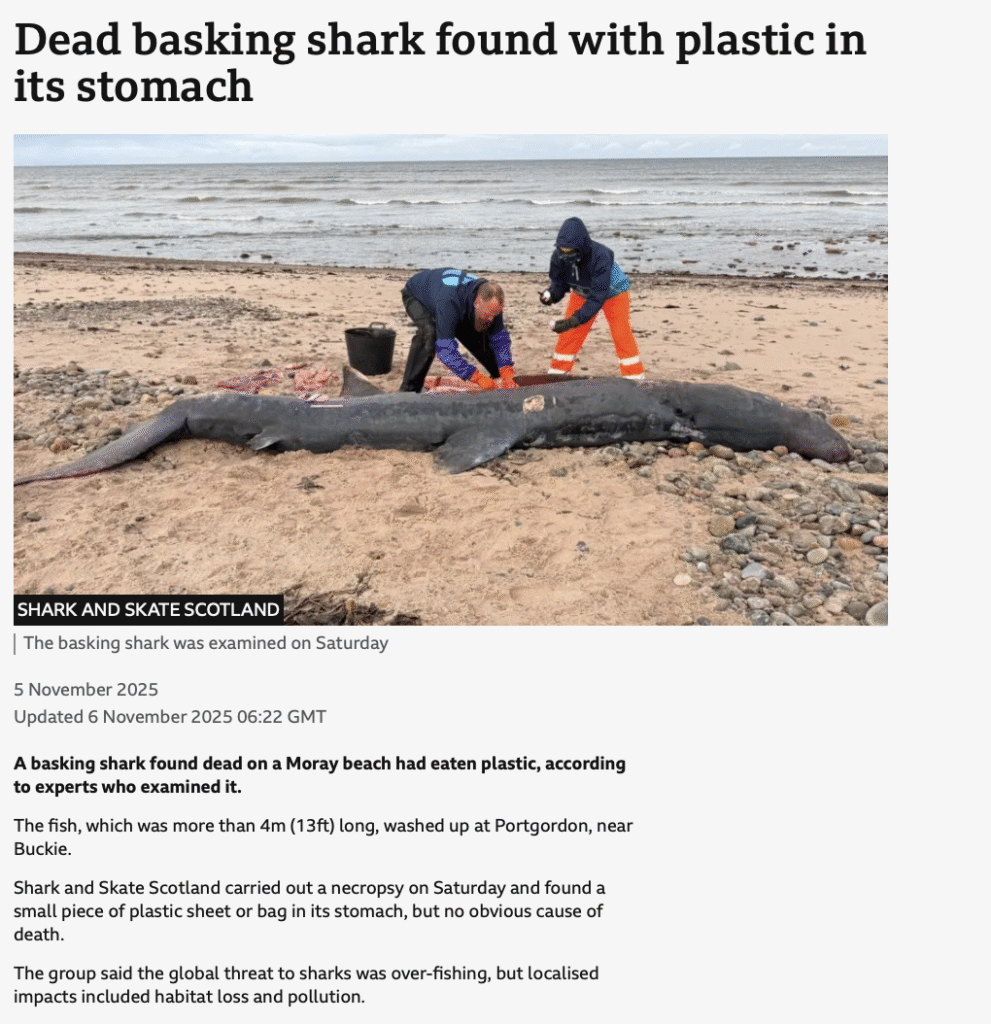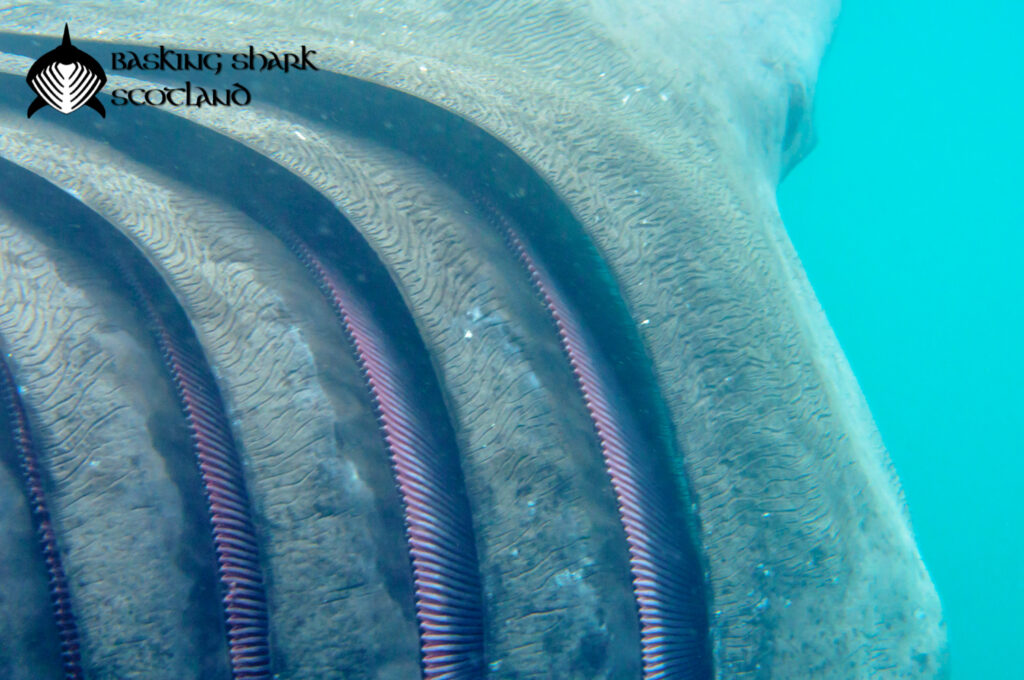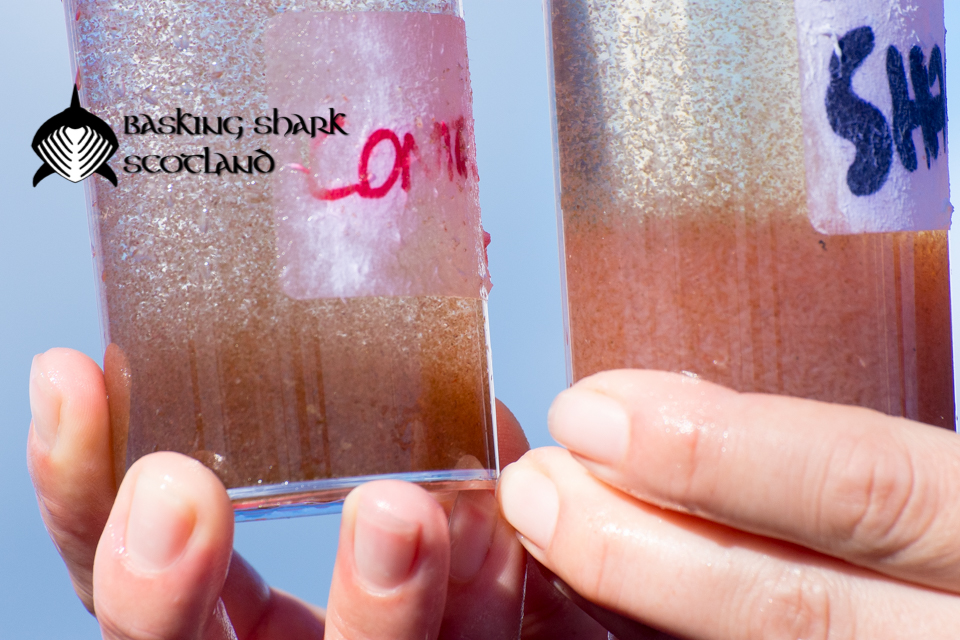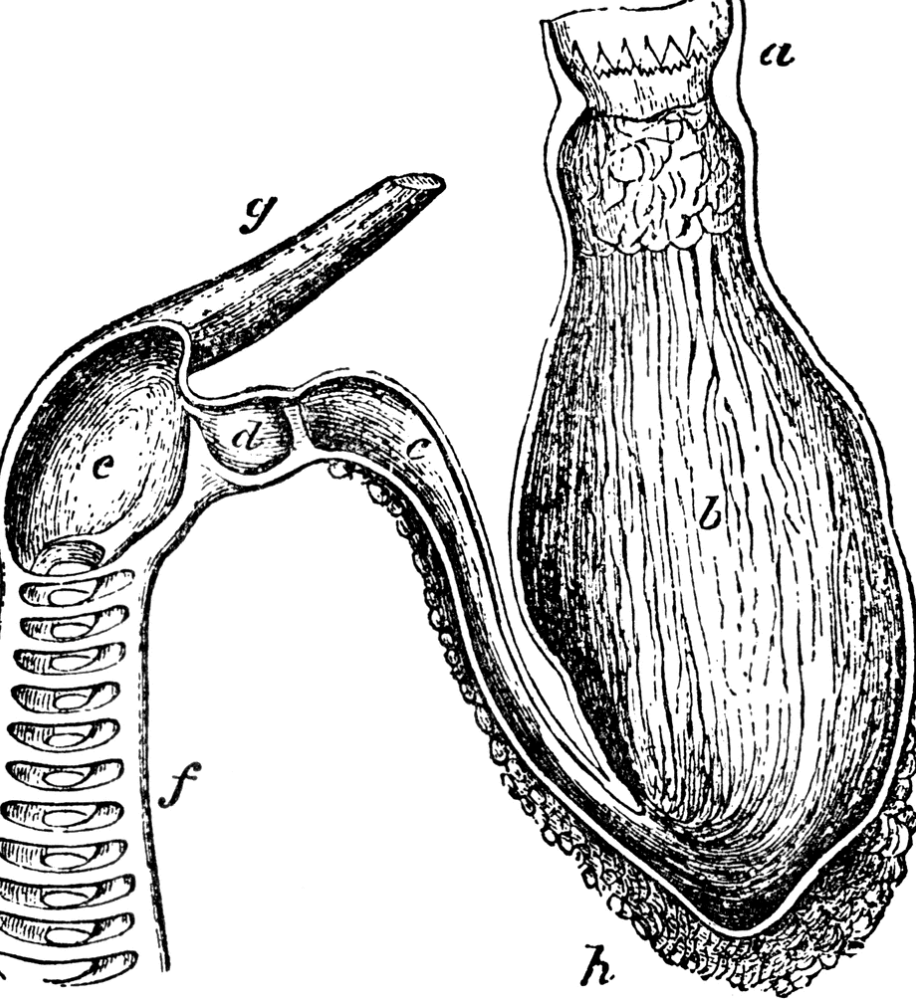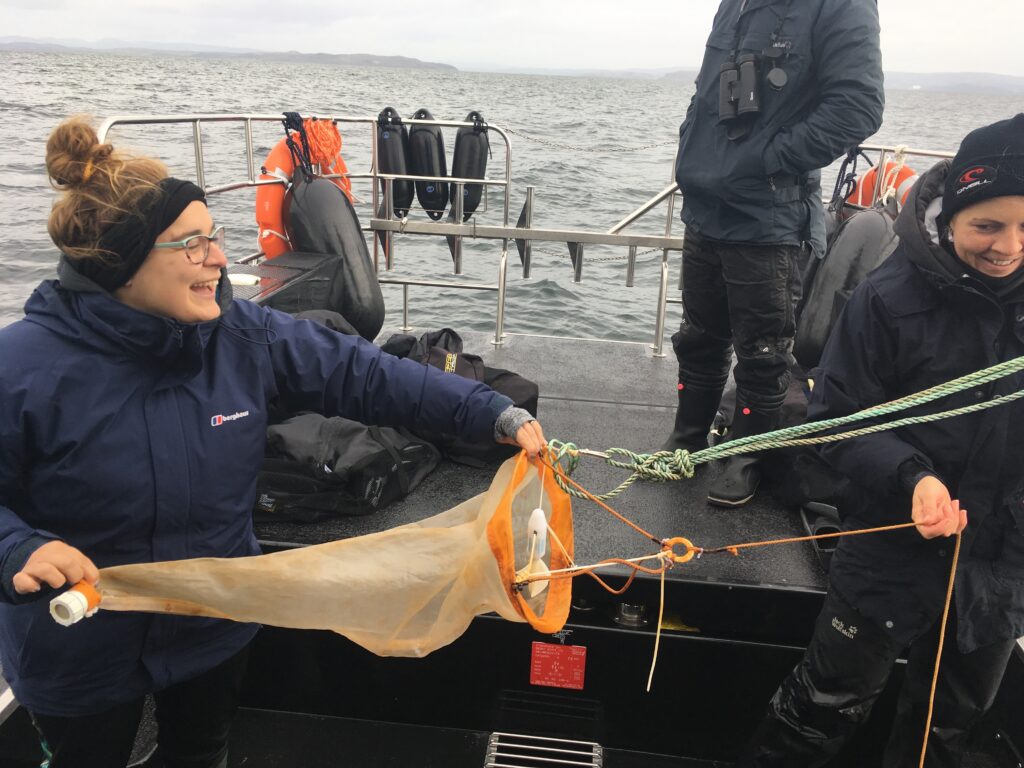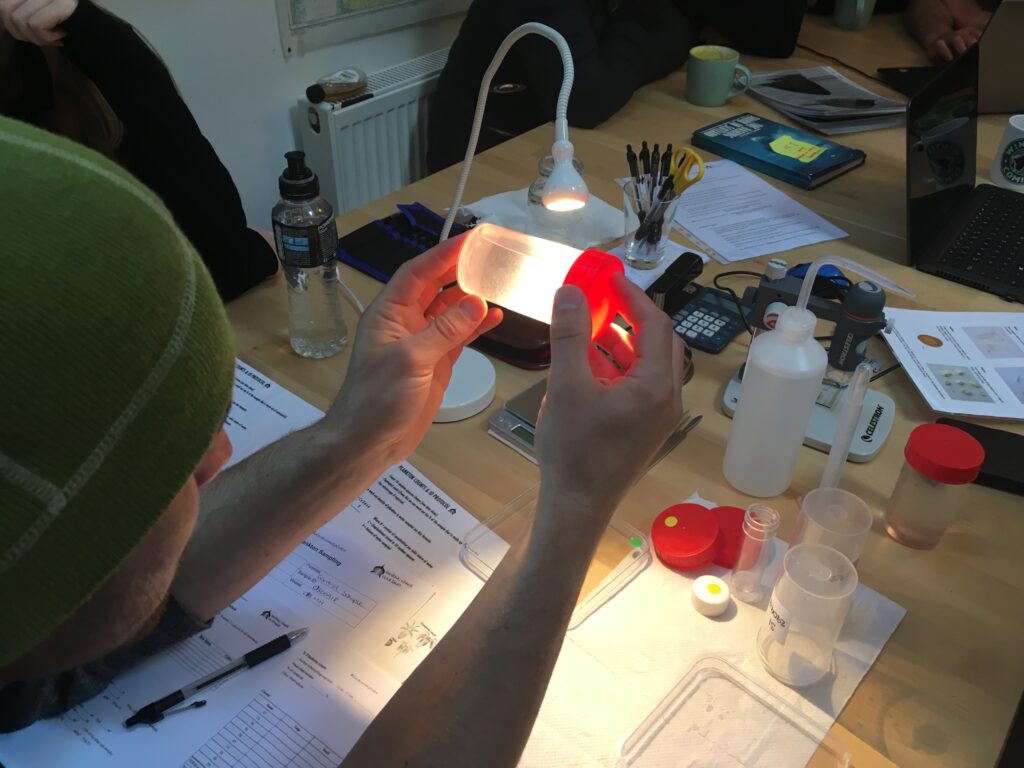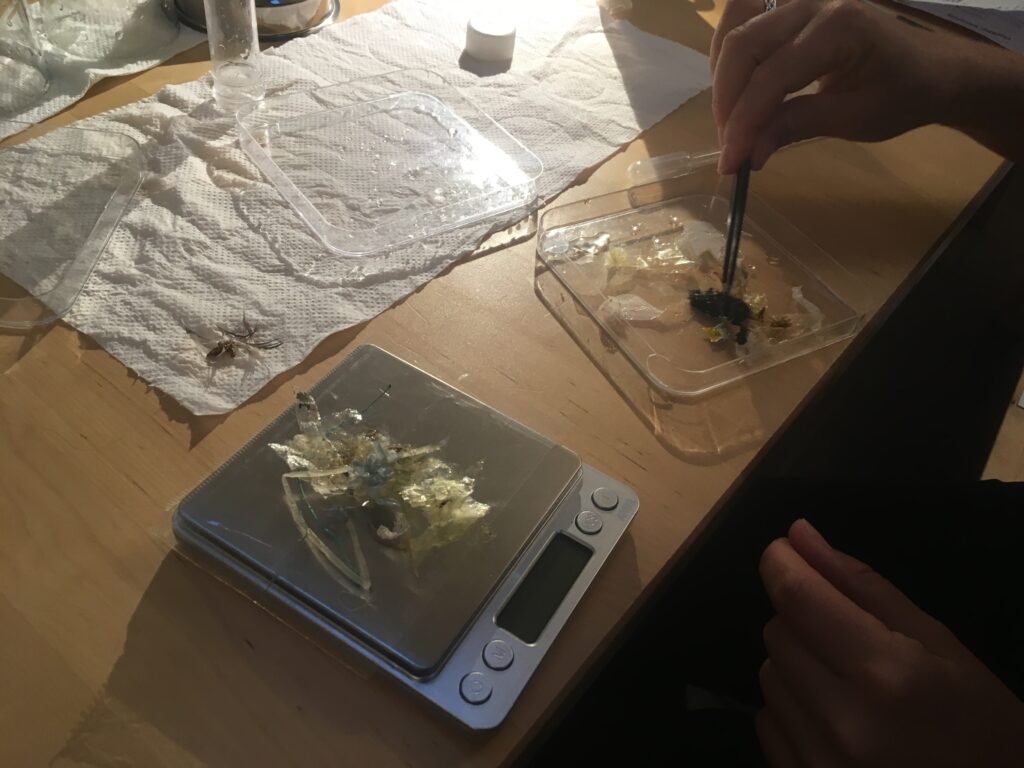
Basking Sharks & Plastics
Nov 06 2025
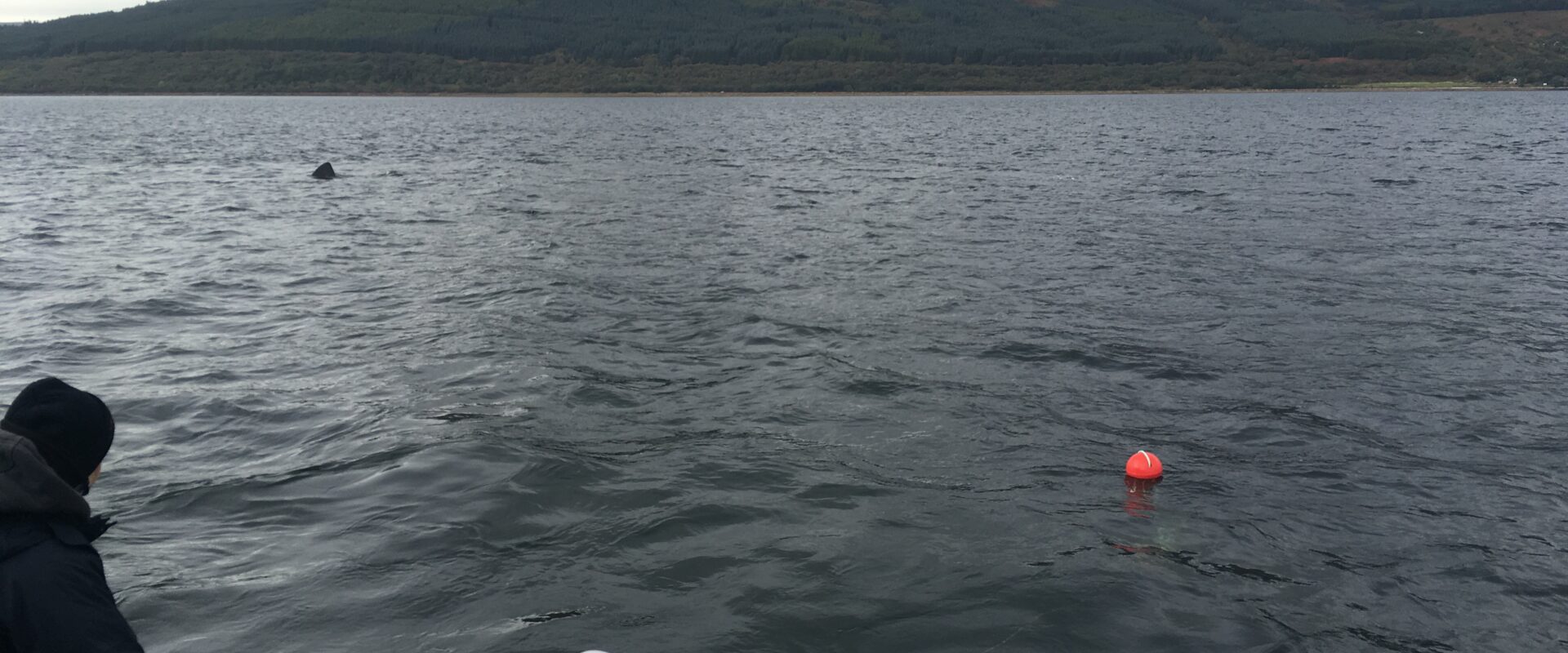
Plastic found in stranded Basking Sharks Stomach
You might have seen all the media today around plastic found in the stranded basking sharks stomach. A good time to highlight the issue of plastics and microplastics to basking sharks along with some of our previous studies & data.
How do Basking Sharks Feed?
As you’ll know basking sharks feed on small zooplankton crustaceans called copepods. They open their mouth and water passes through their gills and over their gill rakers. Gill rakers are a hair like structure, similar to a whales balleen, which is covered in sticky mucus. The small copepods are caught/stuck here and once the gill rakers are sufficiently full, the shark closes its mouth and ingests them.
Tidal Fronts
Zooplankton is at the mercy of ocean currents and are concentrated in areas called tidal fronts. The currents that concentrate the zooplankton also collect the human introduced flotsam and jetsam. This means in areas where basking sharks feed, there is all sorts of large and small pieces of plastic junk.
Risks to Basking Sharks
The risk for basking sharks feeding in these zooplankton dense areas is that there is also a multitude of plastic in various sizes. What we don’t understand is how much they can ingest, whether plastics can get trapped in the rakers/mucus, whether they avoid larger pieces, or how it affects their digestions and physiology. However we do know that a basking sharks stomach and intestine is small and coiled, evolved to be able to digest the plankton efficiently. It’s been previously described in stranded whales that their digestive tracts and stomachs have been blocked by plastic but we don’t know if this is or will be, a problem for basking sharks.
Previous Study
We’ve previously conducted a pilot study looking into this a few years ago in different locations. The worst (& best) example was in the Clyde estuary near Arran.
We were conducting zooplankton studies and saw that there was a lot of visible debris in the water along with the plankton. We sampled next to where the basking sharks were feeding to ensure we sampled the same space and depth. We were then able to calculate how much water we sampled (via a flow meter), then we were able to separate the larger plastics (not the microplastics) to capture a plastic weight per volume of water. Basking sharks feeding rate has been studied by various authors and scientifically tested rates have been published. So using these variable we were able to calculate the following;
Plastics Results
Using average (published) basking shark feeding rates, in the water we sampled and the concentration of plastics we found. A theoretical ingestion rate could be suggested to be 440g/hour. That number is incredibly high and on that particular day there was a lot of debris in the water. We don’t know how much the sharks could ingest. However it gives some numbers behind a growing problem in the oceans, one that a very difficult to solve and something that requires further study.


